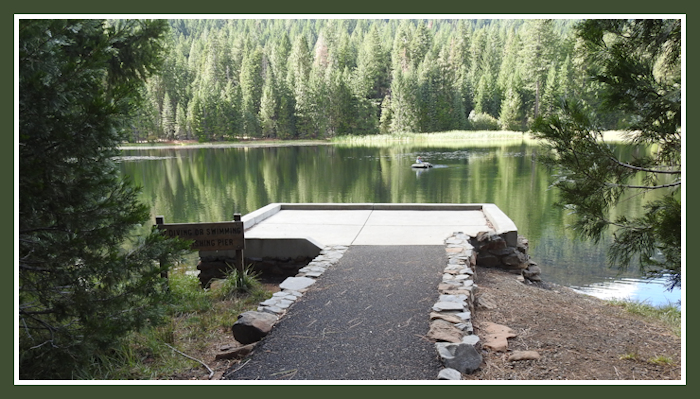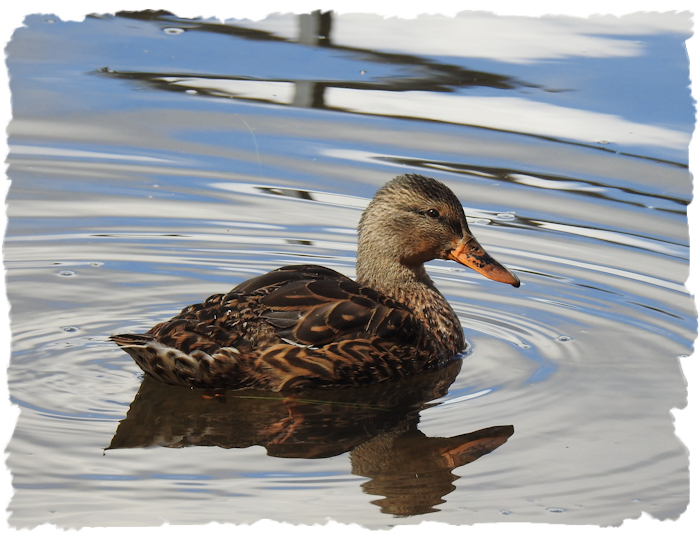ACCESSIBLE CAMPING
Thought for today: Philippians 4:8 ..Whatever is true, whatever is noble, whatever is pure, whatever is lovely, whatever is admirable - if anything is excellent or praiseworthy, think about such things..
Disclaimer: There is no assurance that any resource or activity I've found or described will be as 'accessible' as you might need. Information or links may be out of date. Use the information at your own risk and be sure to check with your health care professional for exercise advice.
I'm of an age when camping out isn't all that much fun, particularly while using a rolling walker or a wheelchair. Fortunately, every county in northern California has alternatives like hotels or rental cabins in addition to campgrounds. But, these are rural counties catering to fisherman and hunters, so 'wheelchair accessible' accommodations can vary substantially in amenities. Rentable accommodations of any kind can be scarce in the more remote areas. If camping is new to you, an extremely practical blog is Wheelchair Wandering. There are lots of details successful wheelchair camping.
PICK YOUR SPOT
Where to camp if you use a wheelchair or rolling walker - That's the big question. For newbies, I would lean towards using a developed campground identified as 'wheelchair accessible' in one of these areas: Whiskeytown National Recreation Area or MacArthur-Burney Falls State Park for most seasons; Lassen National Park, McCloud Falls area (Cattle Camp Campground or Fowlers Campground, Shasta Trinity National Forest) for late summer. Juanita Lake Campground (Klamath National Forest) is great if you plan on visiting the Klamath Basin or Tule Lake National Wildlife Refuges or Lava Beds National Monument. In terms of wheelchair access these particular locations should produce a rewarding outdoor experience for the mobility challenged and their families.

For experienced mobility challenged campers, or if you want a less populated camping experience, you'll really have to do your homework and make some phone calls or do some advance scouting. For example, the national forests have numerous campgrounds but comparatively few facilities have true wheelchair suitability. By that I mean a campground with wheelchair accessible rest rooms, accessible campsites and accessible connective trails with something to do in addition to sitting around.
Maybe you don't use a rolling walker or wheelchair. Maybe you just need to use hiking poles, walking stick or forearm crutches. Your options for camping are then even broader than mine. Take a look at all that Terry Craig, The Disabled Hiker is accomplishing. Terry has some great videos for problem solving adaptive hiking and backcountry camping. He has many gear reviews that might help anyone with mobility issues who want to camp in far away places.
Mostly, resource agency staff has no real understanding of what a handicapped challanged person needs in the way of a camp site. If you need a paved, flat surface wheelchair accessible campsite with a paved trail to the wheelchair accessible restroom area and connective paved roadways within the campground, then you need to ask about those specific features. If you do not need a paved world, then ask about the specific features you do need. And do not be surprised if the staff has zero information and tells you to just go see for yourself. (Oh, and the brand new USFS maps are no help at all, and provide no accessibility information.)
On the 'good news' side, many developed campgrounds on federal lands are now managed by third party companies (concessionaires), and these companies do seem to know what locations may be wheelchair friendly. If at all possible, pre-scout your chosen locations and confirm site conditions by phone with either the agency's district office or the campground concessionaire before making reservations. If the campground is first-come, first serve, do not assume able-bodied campers won't take the only 'accessible' campsite there. Have a back-up plan. Reservations are a good thing when you need that one spot in the campground that is accessible by a wheelchair.
Gear-wise, I can only guess what you might choose. For tent camping, we have a large Coleman Instant Tent suitable for developed campgrounds (aka car camping). It really does go up easily within minutes and is big enough for two XL cots, my WalknChair, and tons of gear. It would be suitable for a wheelchair if you taped the entry down, though I think a person could just roll right in. One person could NOT assemble this tent if mobility challenged, but if traveling with a companion, then you'd do fine.
Camping means a LOT of extra planning plus a lot of gear. But it can be well worth the effort in the scenic north state. CAUTION:Do not leave expensive valuables in your tent/camper. The woods and campgrounds are not as safe as they used to be from either two legged or four legged predators.
When camping it may also be a good idea to carry some innovative gear that could make a less developed location more usable. Portable telescoping wheelchair ramps is a really good idea for getting into bathrooms onto bridges or into areas that ought to be accessible but might not be so this year. A portable commode and a popup changing room (for the commode) can be added to your camping gear to spare you that long walk/roll in the dark.
If you are camping, hiking or driving in fairly remote areas where cell service is lacking, you might consider a satellite tracking device like SPOT Personal Tracker. These devices have been instrumental in bringing emergency help to the aid of injured or trapped campers.
Preplanning for the unexpected difficulties will make for a smoother, more satisfying camping experience. Be the best prepared camper ever! Plan ahead and expect to have fun. It's an adventure!
Draft Accessible Campgrounds List PDF
